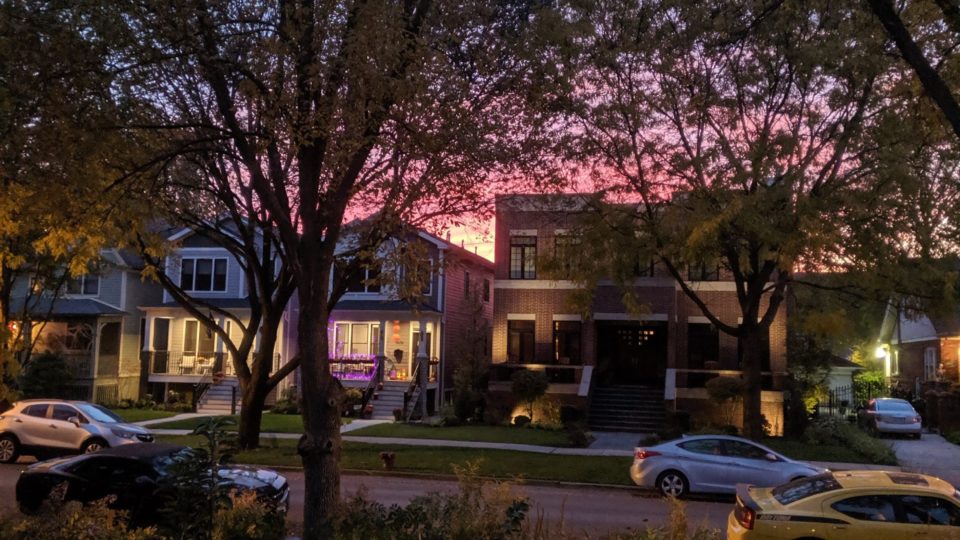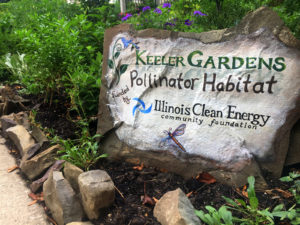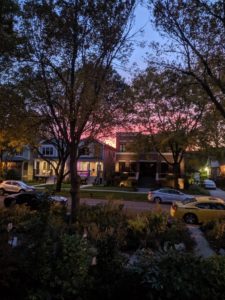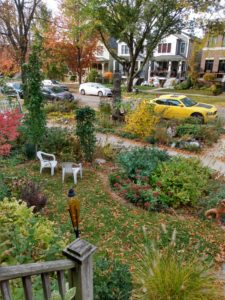By Abigail Chavez, ASM 2021 Fall Intern
Keeler Gardens serves communities with interactions and experiences with nature through a hands-on lens. Programs invite you to explore over 200 different species. One of these genuine connections fosters healthy life skills in the comfort of a pollinator habitat. A pollinator habitat (such as the one at Keeler Gardens) is home to plants in substantial masses so pollinators have plenty of variation. There are always changes being made to the original habitat at Keeler Gardens, that was created with a grant from the Illinois Clean Energy Community Foundation.
There is plenty of work needed to build a garden of this type and size. As a true habitat it provides food, water, shelter, and a place for pollinators to raise their young. The layout relies on several elements beyond the expected plantings: large rocks, flat stones, chairs, water features, and annuals in both the ground and containers. Keeler Gardens plays with planting in both the ground and in containers to offer pollen, nectar, and foliage at different heights. Stones used in the garden anchor corners, and “steppers” allow visitors to walk into the space to examine the gardens plants/pollinators up close. There is also a narrow brick path that lines the curb, which separates the habitat from the street. Native shrubs are seen scattered throughout the garden to solidify the structure.
We have incorporated innovative advancements for irrigation, a custom-designed micro-spray system. We experimented with saving water last year and limited supplemental watering to document how the native plants performed. This pollinator habitat did not need any supplemental water for its plants this year. We were able to utilize only natural rainfall to support growth for its plants and flowers and it has proven to be successful. The overall growth has been stunning, all the while connecting to the gardens’ core values. Conservation is key!
As we mentioned things are always evolving and although disheartening, we have an update to share. One of our dearest ash trees, creating a grand canopy for our expansive pollinator habitat, has fallen victim to nature. You can see it in the lovely image of the sun setting over the habitat, one if its last days. A substantial center branch was splitting straight down the middle, causing a hazard to the community. Sadly, the tree had to be removed. However, and with great thanks to the generous crew of Streets and Sanitation, we were able to keep our ash tree’s trunk, which remains over 6 feet tall! We aim to recruit local talent, a chain saw artist, to create a lasting version of our tree. You can see the trunk in the image of the habitat taken after it was cut down to its new, much smaller height. To fill its place, there are plans for an Allegheny Serviceberry.
As always, any questions about the garden, email Gina directly at Gina@KeelerGardens.org. Enjoy, and make sure to connect with nature everyday!



